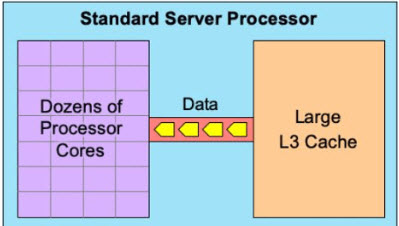The Rise of DeepSeek: Redefining the Future of AI?

The artificial intelligence (AI) landscape is on the brink of a seismic shift with the advent of DeepSeek, a Chinese startup that has developed an innovative AI model capable of rivaling top-tier offerings from global leaders such as OpenAI and Meta. DeepSeek’s groundbreaking approach, which combines cost-effective hardware with optimized software solutions, threatens to upend the industry’s reliance on ultra-expensive infrastructure. This development has far-reaching implications for the AI sector, democratizing access and reshaping the competitive dynamics.
Cost-Effectiveness at the Core
DeepSeek’s most compelling proposition is its ability to deliver high-performing AI at a fraction of the cost. While companies like OpenAI and Meta have poured billions into developing their models and rely on advanced chips manufactured by Nvidia and Taiwan Semiconductor Manufacturing Company (TSMC), DeepSeek claims to have achieved comparable results with an investment of under $6 million.
This dramatic reduction in cost is made possible through the use of less advanced hardware paired with resource-optimized software. Instead of focusing on the most cutting-edge chips, DeepSeek leverages innovative methodologies to maximize efficiency, reducing overhead and making AI development more accessible to smaller players.
Implications for the AI Market
- Democratization of AI The cost barrier to AI development has historically excluded smaller organizations and emerging economies from participating in cutting-edge research and applications. DeepSeek’s model opens the door for more players to enter the field, fostering innovation and competition. This democratization could accelerate the development of localized AI solutions tailored to unique cultural, linguistic, and economic contexts.
- Pressure on Industry Giants The AI chip market, dominated by Nvidia and TSMC, faces mounting pressure as DeepSeek’s approach gains traction. If companies can achieve similar performance without relying on high-end processors, demand for these expensive chips may decline, forcing industry leaders to adapt their strategies. This shift could lead to a re-evaluation of pricing models and greater investment in alternative, cost-effective technologies.
- A Paradigm Shift in AI Development DeepSeek’s success signals a broader trend towards optimizing efficiency over sheer computational power. This paradigm shift encourages a rethinking of AI’s development pipeline, emphasizing smarter resource allocation and sustainable scaling. Companies that adapt to this model are likely to thrive in a more cost-conscious market.
- Open Source as a Balancing Force One significant way to mitigate the geopolitical and market risks associated with DeepSeek’s dominance is through open-source AI development. By openly sharing methodologies, software optimizations, and frameworks, other companies and researchers can replicate and enhance similar cost-effective models. This approach reduces reliance on a single player or region, spreading innovation globally and fostering a collaborative environment. Open-source initiatives also encourage transparency and trust, ensuring that advancements are not limited to specific geopolitical interests.
Challenges and Considerations
While DeepSeek’s claims are promising, several challenges must be addressed before their approach can be widely adopted:
- Performance Validation: The long-term viability and performance of models developed using less advanced hardware remain to be fully validated. Any significant gaps in reliability or scalability could temper enthusiasm for this approach.
- Adoption Barriers: Established players with entrenched investments in high-end infrastructure may be slow to adopt or recognize the benefits of DeepSeek’s methodology.
- Geopolitical Concerns: As a Chinese company, DeepSeek’s rise may spark geopolitical tensions, particularly in the context of ongoing tech rivalries between the U.S. and China. Trade restrictions and intellectual property disputes could impact its global influence.
- Open-Source Dynamics: While open-source development has enormous potential, it also introduces challenges related to intellectual property rights, monetization, and the risk of misuse by malicious actors. Ensuring that open-source models remain secure and responsibly utilized will require coordinated global efforts.
Conclusion
DeepSeek represents a bold new direction for the AI industry, challenging assumptions about the resources required for cutting-edge innovation. By proving that high-performance AI can be achieved cost-effectively, DeepSeek has the potential to democratize access, disrupt industry giants, and inspire a more inclusive and sustainable AI future. The promotion of open-source development could further amplify these benefits, reducing risks associated with geopolitical dependencies and fostering global collaboration. As the industry continues to evolve, all eyes will be on DeepSeek to see if it can deliver on its promises and truly change the game for AI.
Stay tuned!




























